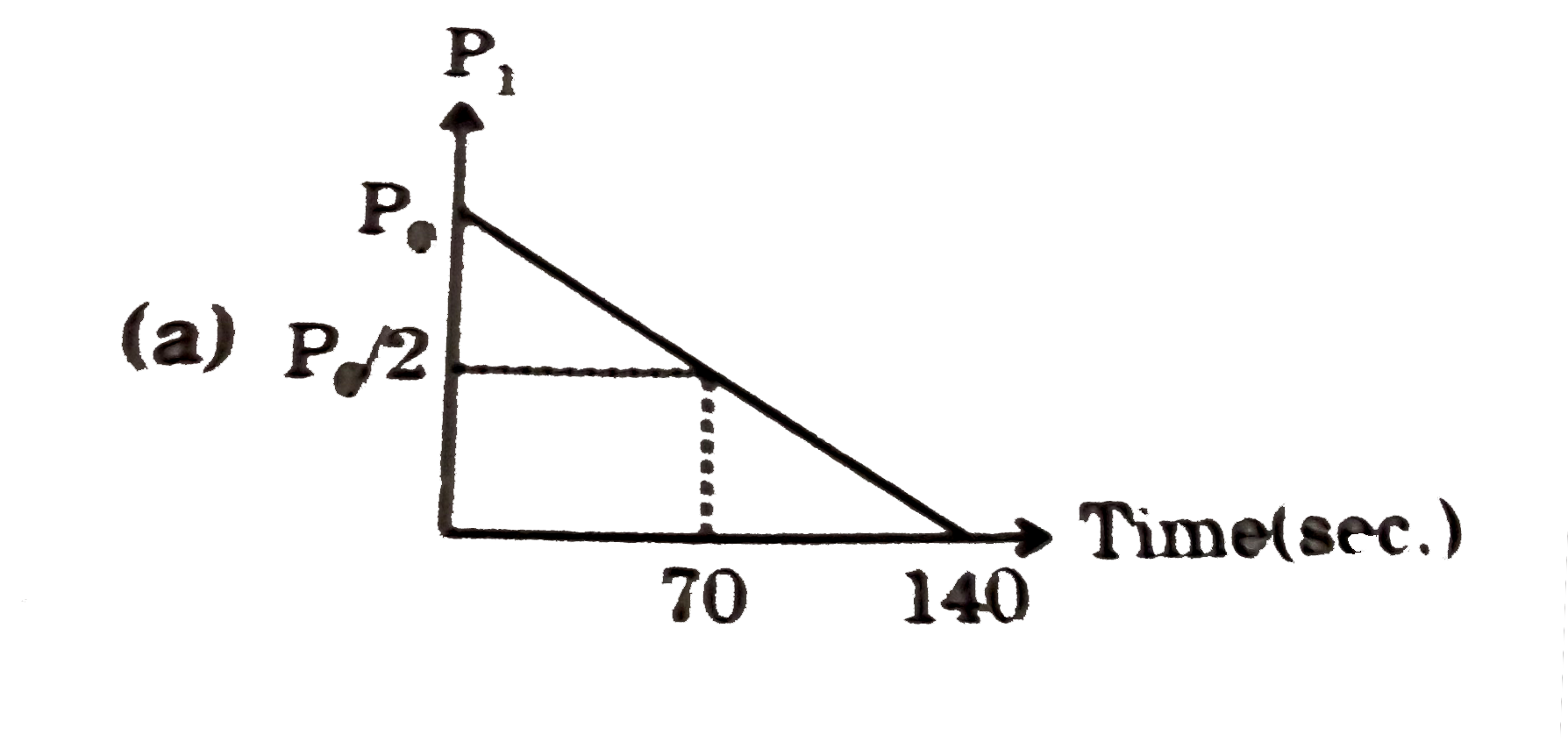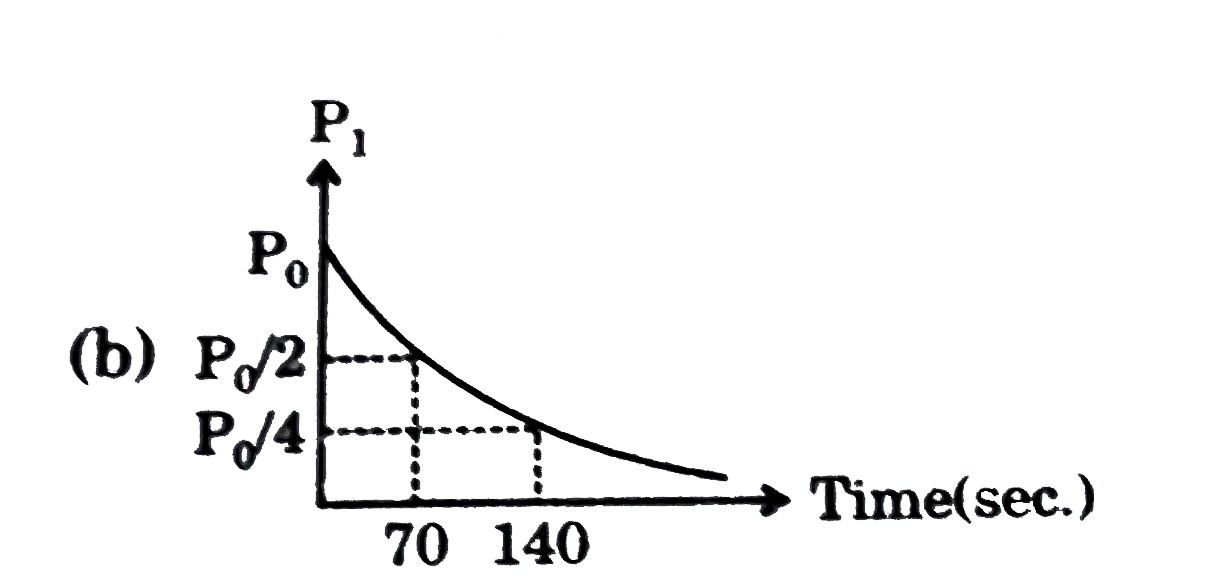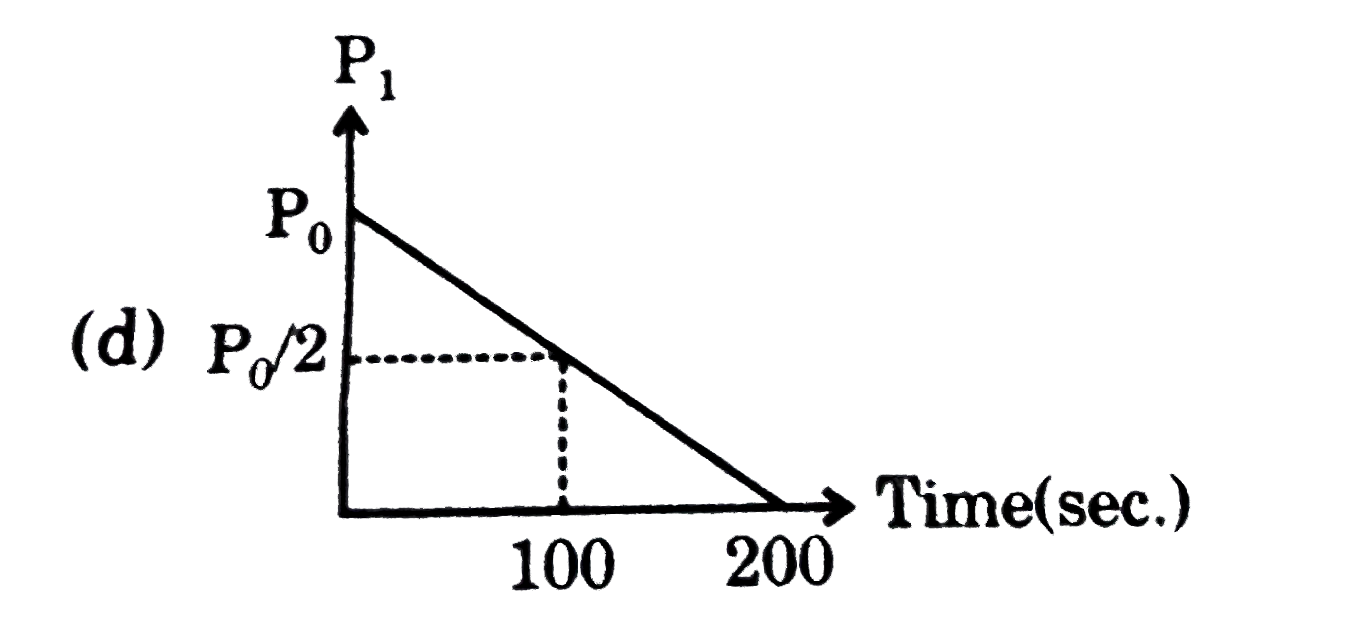The process by which a gas passes through a small hole into vacuum is called effusion. The rate of change of pressure(p) of a gas at constant temperature due to effusion of gas from a vessel of constant volume can be related to rate of change of number of molecules by the expression:
dpdt=kTV(dNdt)
where rate of change of number of molecules
⇒−(dNdt)=pA0(2πmkT)1/2
where k=Boltzmann constant
NA = Avogadro's number
T= Temperature (in K)
V= volume of vessel
N=Number of molecules
A0 = Area of aperture
m=Mass of single molecule
γ=VA0√2πmkT
In 1 m long tube at one end He is introduced while from other end SO2 is introduced under identical conditions Gas will first meet from He and at a distance:
12 m
15 m
35 m
45 m
The correct Answer is:d
Step by step video, text & image solution for The process by which a gas passes through a small hole into vacuum is called effusion. The rate of change of pressure(p) of a gas at constant temperature due to effusion of gas from a vessel of constant volume can be related to rate of change of number of molecules by the expression: (dp)/(dt)=(kT)/V((dN)/(dt)) where rate of change of number of molecules Rightarrow -((dN)/(dt))=(pA_(0))/(2pimkT)^(1//2) where k=Boltzmann constant N_(A) = Avogadro's number T= Temperature (in K) V= volume of vessel N=Number of molecules A_(0) = Area of aperture m=Mass of single molecule gamma=V/A_(0)sqrt((2pim)/(kT) In 1 m long tube at one end He is introduced while from other end SO_(2) is introduced under identical conditions Gas will first meet from He and at a distance: by Chemistry experts to help you in doubts & scoring excellent marks in Class 11 exams.
Updated on:21/07/2023Topper's Solved these Questions
Similar Questions
The percentage change in the pressure of a gas at constant temperature is 200% (increases). Calcualte the percentage change in the volume of the gas.
View SolutionThe percentage change in the pressure of gas at constant temperature is 200% (increases). Calculate the percentage change in the volume of the gas.
View Solution
Knowledge Check
The process by which a gas passes through a small hole into vacuum is called effusion. The rate of change of pressure(p) of a gas at constant temperature due to effusion of gas from a vessel of constant volume can be related to rate of change of number of molecules by the expression:
dpdt=kTV(dNdt)
where rate of change of number of molecules
⇒−(dNdt)=pA0(2πmkT)1/2
where k=Boltzmann constant
NA = Avogadro's number
T= Temperature (in K)
V= volume of vessel
N=Number of molecules
A0 = Area of aperture
m=Mass of single molecule
γ=VA0√2πmkT
If 2 g of SO2 effuses from given container in 10 sec then, mass of He effusing out in 30 seconds under identical conditions will be:A6 gB3 gC1.5 gD0.75 gThe process by which a gas through a small hole into vacuum is called effusion. The rate of change of pressure (p) of a gas at constant temperature due to effusion of gas from a vessel of constant volume can be related to rate of change of number of molecules by the expression:
dpdt=kTV(dNdt)
where Rate of change of number of molecules
⇒ −dNdt=pA0(2πmkR)1/2
where, k= Boltzmann constant
NA=Avogadro's number
T= temperature (in K) ⇒ −dNdt=pA0(2πmkR)1/2
NA=Avogadro's number
T=temperature (in K)
V=volume of vessel
N=1 no.of molecules
A0= area of aperture
m=mass of single molecule
γ=VA0√2πmkT
If initial pressure is P0 then pressure of gas at any time t in the container at constant V and T is given by:AP0e−t/yBP0et/γCP0(1−e−t/γ)DP0(1−et/γ)The process by which a gas through a small hole into vacuum is called effusion. The rate of change of pressure (p) of a gas at constant temperature due to effusion of gas from a vessel of constant volume can be related to rate of change of number of molecules by the expression:
dpdt=kTV(dNdt)
where Rate of change of number of molecules
⇒ −dNdt=pA0(2πmkR)1/2
where, k= Boltzmann constant
NA=Avogadro's number
T= temperature (in K) ⇒ −dNdt=pA0(2πmkR)1/2
NA=Avogadro's number
T=temperature (in K)
V=volume of vessel
N=1 no.of molecules
A0= area of aperture
m=mass of single molecule
γ=VA0√2πmkT
If under any conditions γ=100sec then select the correct graph of pressure of gas at any time (Pt) us Time (t). [Given : In 2=0.7]A B
B C
C D
D
In a process, the pressure of a gas remains constant. If the temperature is doubles, then the change in the volume will be.
View SolutionIn a process, the pressure of a gas remains constant. If the temperature is doubles, then the change in the volume will be.
View SolutionWhich is the correct expression that relates changes of entropy with the change of pressure for an ideal gas at constant temperature, among the following?
View SolutionWhich is the correct expression that relates changes of entropy with the change of pressure for an ideal gas at constant temperature, among the following?
View SolutionWhich is the correct expression that relates changes of entropy with the change of pressure for an ideal gas at constant temperature, among the following?
View Solution
